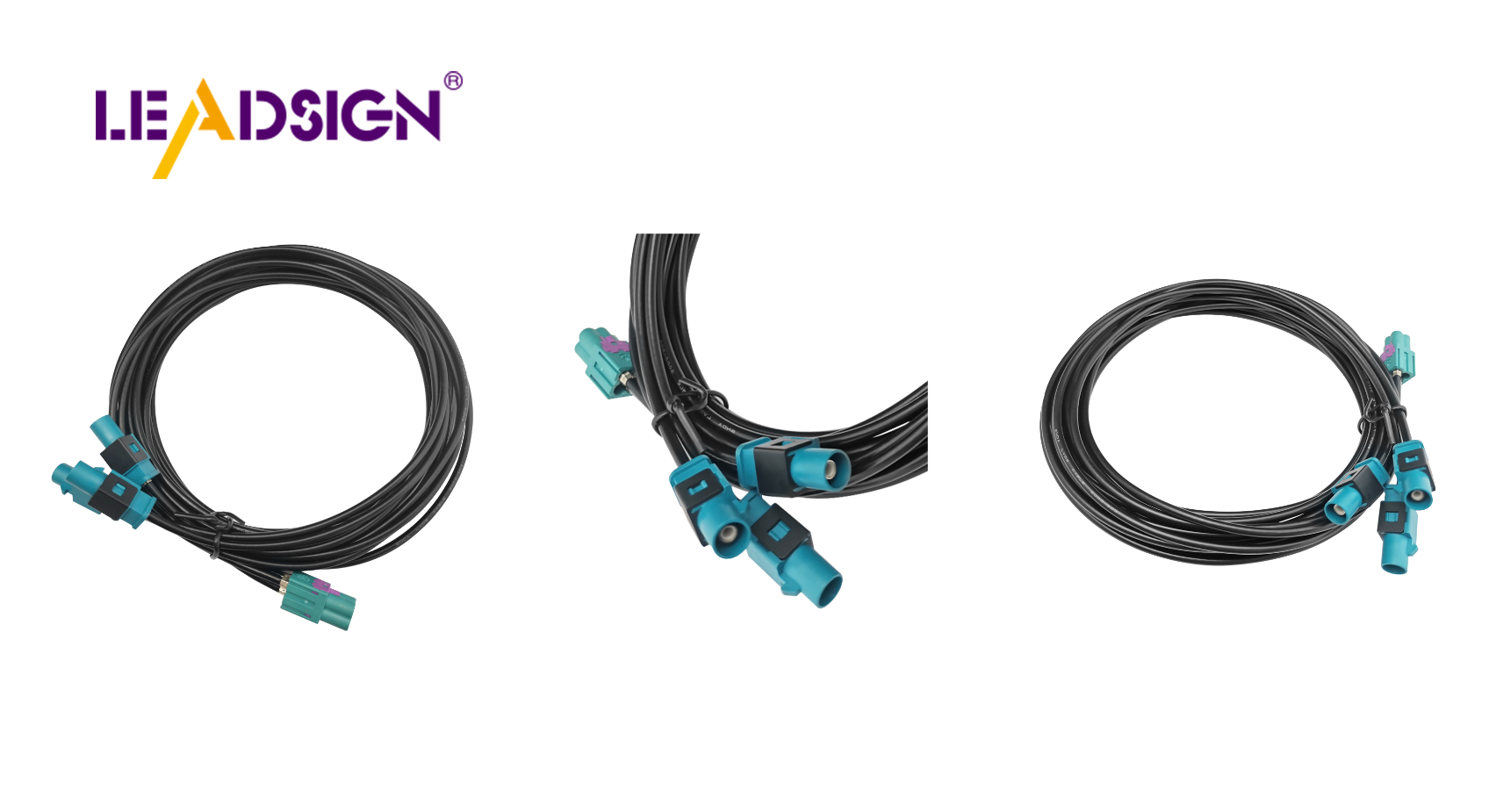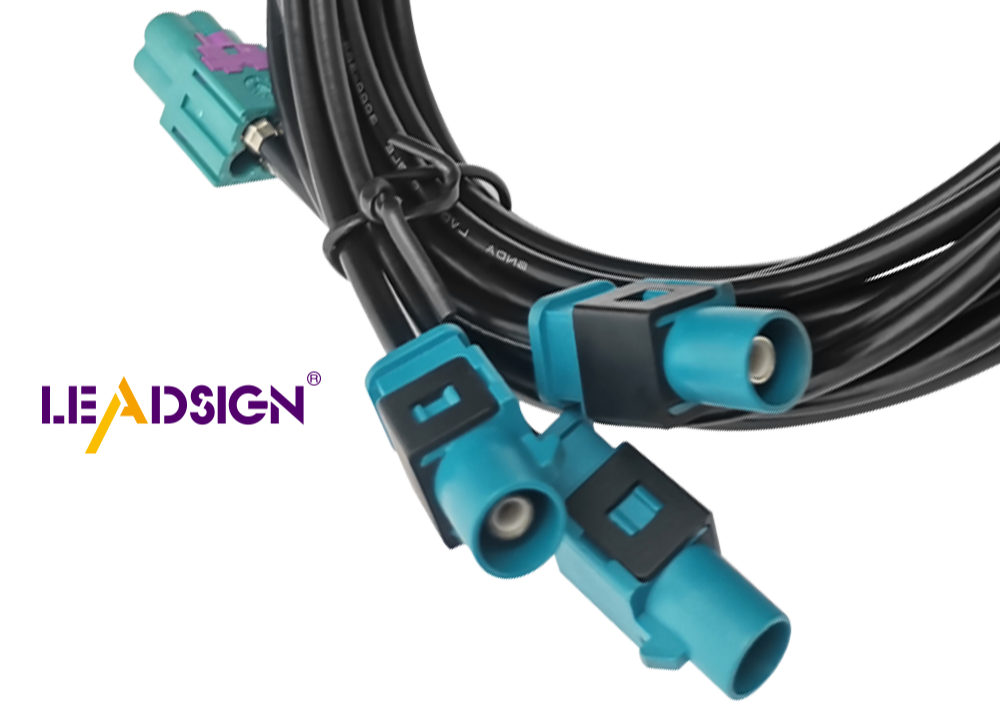Analyzing Automotive Electrical Connectors Types and Their Performance Standards

Automotive electrical connectors are crucial in today's vehicles, ensuring the reliable transmission of power and signals necessary for optimal performance of car components. As the automotive industry evolves, understanding the various automotive electrical connectors types is essential for fostering innovation. The market for these connectors is rapidly expanding, with an anticipated growth rate of 5.8% annually until 2026. This growth is driven by the increasing integration of electronic components and safety features in vehicles. Robust connectors are increasingly in demand, particularly in systems such as ADAS and infotainment.
Exploring Automotive Electrical Connectors Types

Knowing the different types of automotive electrical connectors is important. They help cars work well and stay reliable. These connectors are sorted by how they look, what they do, and where they're used.
Classification by Design
Blade Connectors
Blade connectors are popular because they are simple to use. They have a flat piece that fits into a slot. This makes them connect securely, which is good for quick setups.
Pin Connectors
Pin connectors have round pins that go into sockets. They connect well and are used when precision is needed. Their strong build helps in places with lots of movement.
Butt Connectors
Butt connectors join two wires together end-to-end. They are often found in car wiring to extend or fix wires easily. Their design keeps connections strong and steady.
Classification by Function
Power Connectors
Power connectors carry high current loads safely through the car. They last long even in tough conditions, making them reliable.
Signal Connectors
Signal connectors send data between car parts accurately. They need to be precise so systems like radios and GPS work right.
Hybrid Connectors
Hybrid connectors can send both power and signals at once. This means fewer parts are needed, saving space in the car’s setup.
Classification by Application
Engine Compartment Connectors
Engine compartment connectors handle heat and fluids well. Sealed connectors keep out water and dust for lasting use.
Interior Connectors
Interior connectors help with things like music players and air conditioning inside cars. They must work perfectly for comfort features to run smoothly.
Exterior Connectors
Exterior connectors deal with weather changes like rain or sun. Metal-to-metal connectors are tough enough for these challenges, keeping everything working right.
Choosing the right connector helps cars run efficiently without problems.
Understanding How Well Car Connectors Work
Car connectors need to work well in different situations. Rules make sure they do their job right. These rules check how they handle electricity, how strong they are, and if they can face tough weather.
Electrical Performance
Car connectors must handle a car's power needs.
Current Carrying Capacity
This tells us how much power a connector can carry safely. It should not get too hot when carrying lots of power. This helps all car parts work well.
Voltage Rating
This shows the highest voltage a connector can take. It stops connectors from breaking with high voltage. This keeps the car's electric parts safe and working.
Contact Resistance
Contact resistance is about how easy power moves through connections. Low resistance means less energy wasted and better performance over time.
Mechanical Performance
These rules look at how strong and tough car connectors are.
Durability and Longevity
Connectors should last long even in rough conditions. They need to stay working for as long as the car does, so you don't have to change them often.
Vibration and Shock Resistance
Cars move a lot, so connectors must handle shaking without coming loose. This keeps them working even when the road is bumpy.
Insertion and Withdrawal Force
This is about how hard it is to plug or unplug connectors. It should be easy but still keep a good connection for use in cars.
Environmental Performance
These rules see if connectors can survive different weather conditions.
Temperature Range
Connectors must work in very hot or cold places. This makes sure they work well anywhere you drive your car.
Moisture and Corrosion Resistance
They need to resist water and rust to keep working over time. This helps them last longer in cars that face rain or snow.
Chemical Resistance
Connectors should not break down from car fluids like oil or gas. They need this strength to stay safe and perform well in cars.
Car connectors follow standards like USCAR-20 for safety and efficiency throughout their life.
What Connector Rules Mean for Cars
Car connectors affect safety, how well cars work, and new tech. Knowing this helps make better cars for today.
How They Keep Us Safe
Good connectors stop electric problems. They help power and signals move smoothly, so things don't break. Strong connectors keep signals steady. This is key for safety stuff like airbags and brakes. These need good data flow to protect people in the car.
Making Cars Work Better
Connectors also help cars use energy smartly. They cut down on wasted power by lowering resistance. This means more power goes where it's needed, saving fuel and cutting pollution. As cars get fancier, we need even better connectors to save energy.
Helping New Car Tech
Connectors are big in car tech growth. They're key for systems that help drivers stay safe and comfy. Connectors must fit with electric and hybrid cars too. These cars need strong parts for lots of power and data moving around. Making these connectors is vital for future car tech.
"Safety, comfort, and engine changes grow the connector market." This shows how important connectors are for new car tech and what buyers want.
Knowing about car electrical connectors and how they work is important. These connectors help cars run safely and well by moving power and signals. They affect how cars perform and grow with new tech. The rules check how they handle electricity, strength, and weather.
In the future, the car world will keep changing with new ideas like electric cars, smaller parts, and being green. Makers will improve connections to make cars safer and better. As cars change, strong connectors will be needed for cool new systems and what people want in the market.
See Also
Exploring HSD Connectors in Automotive Sector
Enhancing Auto Data Transfer: Advanced Connectors & Cables
Significance of Fakra Connectors in Auto Sector

